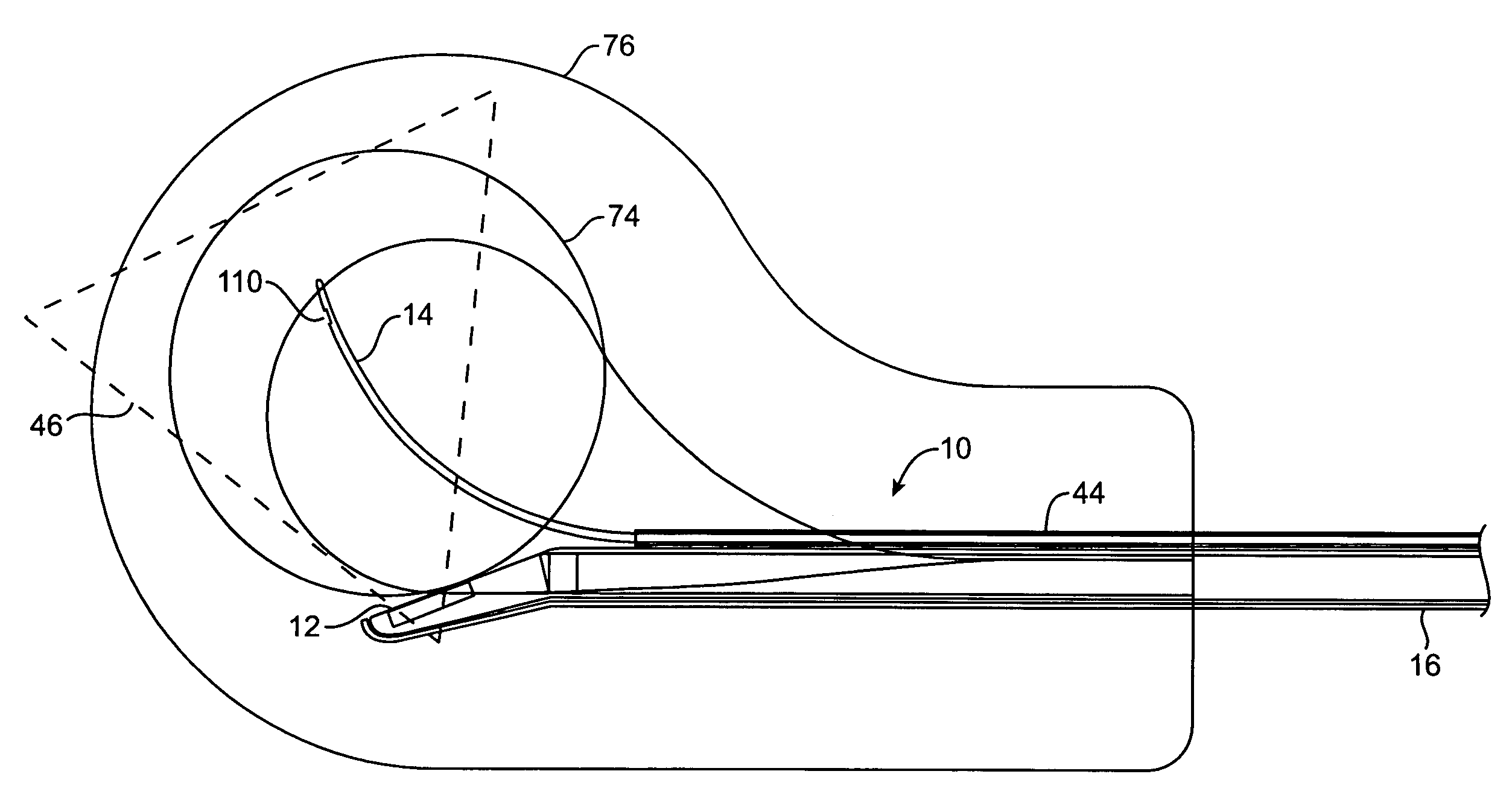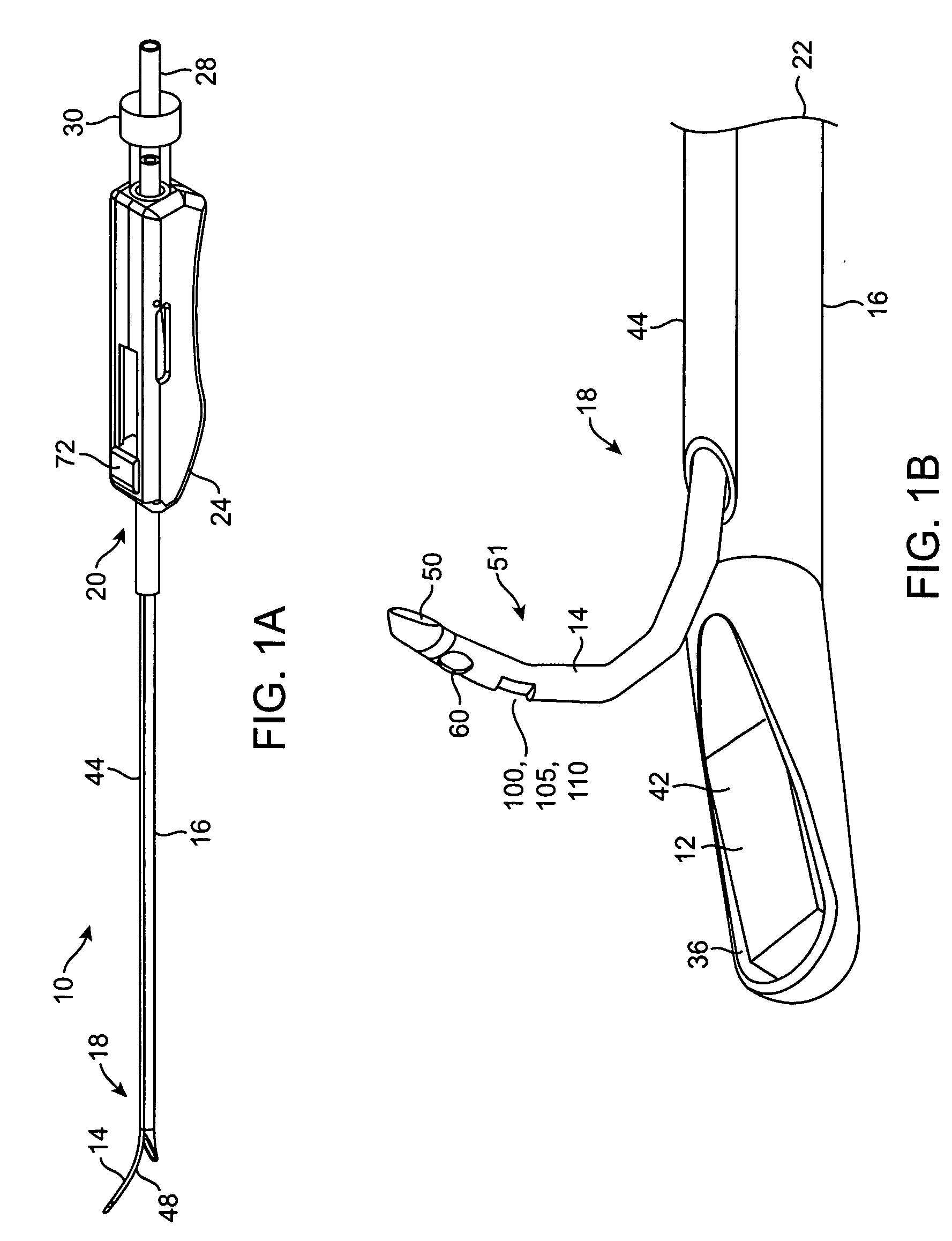Systems and methods for deploying echogenic components in ultrasonic imaging fields
a technology of ultrasonic imaging and components, applied in the field of medical systems and methods, can solve the problems of difficult visualization, limited advantages, difficult to accurately image and track the distal tip of the needle, etc., and achieve the effect of enhancing the image of the needle and facilitating the follow-up of the progress
- Summary
- Abstract
- Description
- Claims
- Application Information
AI Technical Summary
Benefits of technology
Problems solved by technology
Method used
Image
Examples
Embodiment Construction
[0047]Referring now to FIGS. 1A through 1D, an exemplary deflectable tip delivery system 10 having an ultrasound array 12 (inclined as shown) for improved imaging and curved needle 14 for ablation treatment of a target site such as fibroid tissues 74 (FIG. 3) within a female's reproductive system, such as uterus 76, is illustrated. The system 10 generally includes a rigid or other delivery shaft 16, an ultrasound imaging insert 28, and an echogenic curved needle 14 with an artifact / feature 100 at a distal end 51 thereof. As shown, the artifact is a retroreflector 105 of a corner cube type 110. The delivery shaft 16 comprises a distal end 18, a proximal end 20, and an axial passage 22 for housing the ultrasound imaging insert 28 therein. A handle 24 may be attachable to the proximal end 20 of the shaft 16. The distal end 18 of the shaft 16 may have a bent or deflectable distal tip 26, as best seen in FIGS. 1B and 1C. The ultrasound imaging insert 28 includes a flexible shaft 34 (see ...
PUM
 Login to View More
Login to View More Abstract
Description
Claims
Application Information
 Login to View More
Login to View More - R&D
- Intellectual Property
- Life Sciences
- Materials
- Tech Scout
- Unparalleled Data Quality
- Higher Quality Content
- 60% Fewer Hallucinations
Browse by: Latest US Patents, China's latest patents, Technical Efficacy Thesaurus, Application Domain, Technology Topic, Popular Technical Reports.
© 2025 PatSnap. All rights reserved.Legal|Privacy policy|Modern Slavery Act Transparency Statement|Sitemap|About US| Contact US: help@patsnap.com



